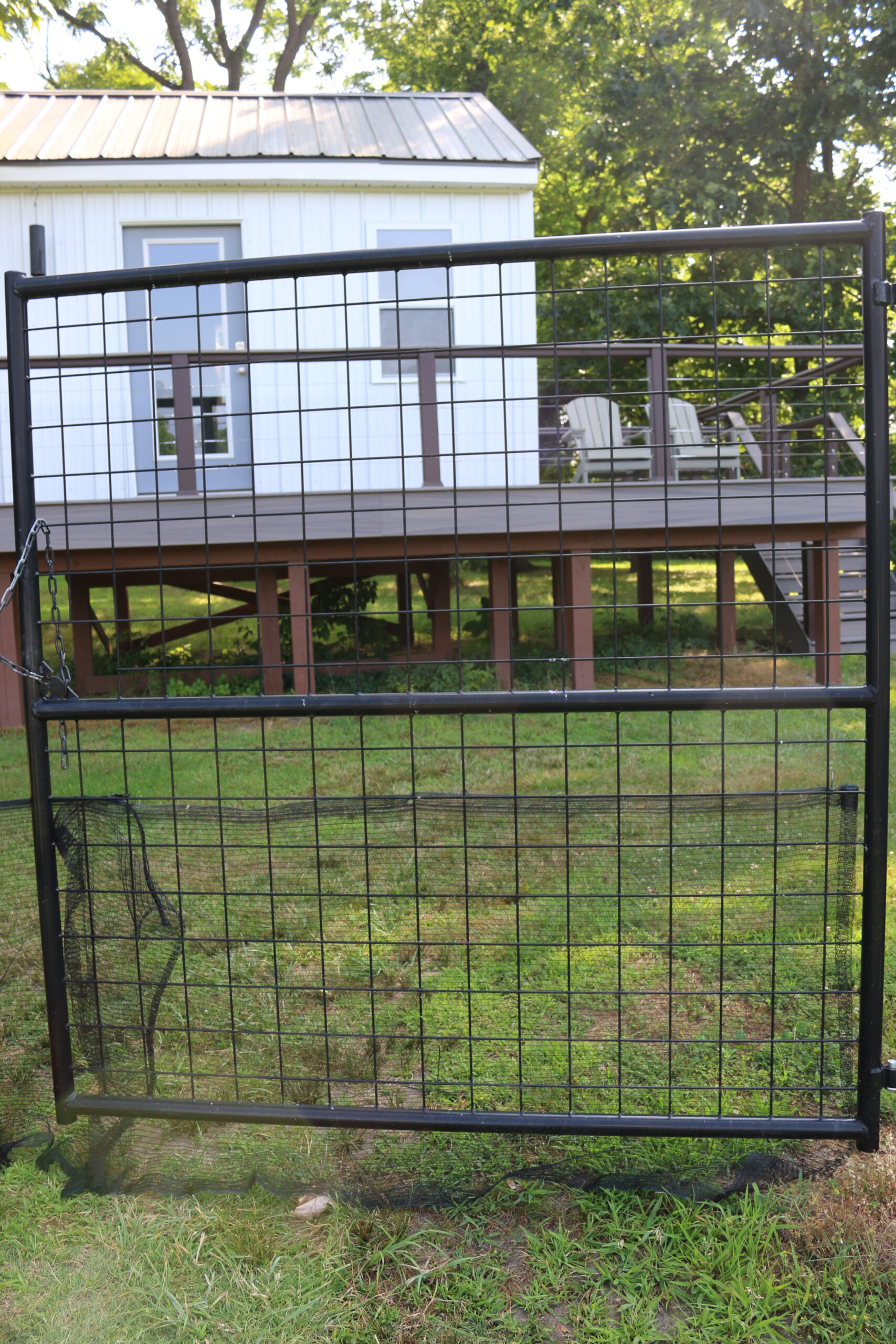New Jersey’s high deer population significantly threatens vineyards, particularly those near wooded areas. Deer are a pest, especially on young vines and in the early growing season when food sources are scarce, and tender shoots are emerging. If the vineyard is close to the deer population, management is needed for the long-term productivity of the vineyards.
Identifying the deer damage: Deer browse on leaves and tender shoots using the lower front teeth. Deer do not have upper incisors, so the leaves browsed by deer have a rough, torn, and shredded appearance but no tooth marks (Figure 1). This can cause substantial crop loss and even compromise the health of the vines, specifically if the same vine is damaged over the years (Figure 1). Fortunately, secondary buds of grapevines can grow and produce replacement shoots when the actively growing shoot tip from the primary bud is damaged. A new shoot from a basal bud may not be as productive, however, it will ensure new vegetative growth, sustaining the canopy of the grapevine.
Management: Not all vineyards are equally affected. For example, deer have consistently damaged the 5-6 vines of border rows in previous years at a southern NJ-based vineyard. But the damage is consistently limited only to those few vines, so no specific prevention method is used. Generally, once the shoot has reached the second catch wire, there is more leaf damage while the apical shoot continues to grow. If the apical growth is damaged, new shoots will grow from lateral buds, and they can be productive, albeit with reduced yield (Figure 2). All routine cultural practices should be continued to keep this new growth healthy and develop healthy basal buds for the following year’s growth.

Figure 2. The emergence of shoot from the secondary bud after the destruction of the terminal growth by deer damage. The new shoot has a flower cluster. Photo by H. Gohil
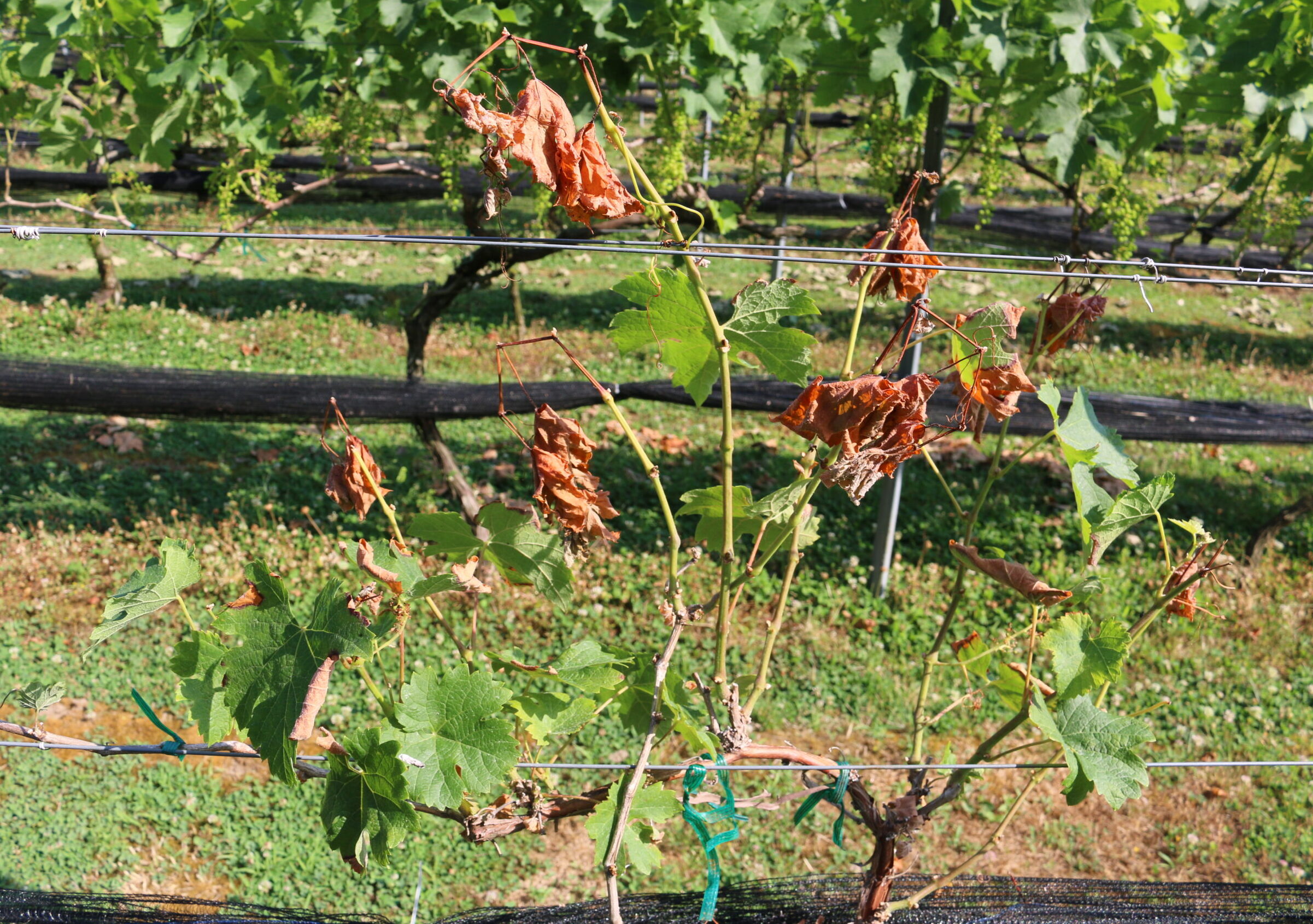
Figure 1. Evidence of leaf browsing by deer in the early spring. The grapevine is declining due to continuous deer damage over the years. Photo by H. Gohil
A permanent fence promises permanent exclusion. Exclusion is the best strategy for any deer-affected vineyard to avoid deer damage, even at the cost of aesthetics. Some growers have mentioned that they do not like the industrial look, which may not appeal to winery customers. The reality is that in most vineyards in NJ, Deer fencing is a necessity. With large, wooded areas and multiple open access points, the requirement for permanent fences could increase substantially. For effective deer fencing, a minimum 8-foot-high, woven-wire fence is a must (Figure 3). This height helps deter deer from attempting to jump over the fence. The fence has to create a complete enclosure. Figure 4 is an example where 2 feet of straight wire fencing over 6 feet of woven-wire fence gave a total of 8 feet of height; however, the deer was able to jump through. If there is a gate, ensure use netting or other material to prevent deer from passing under the gate (Figure 5).
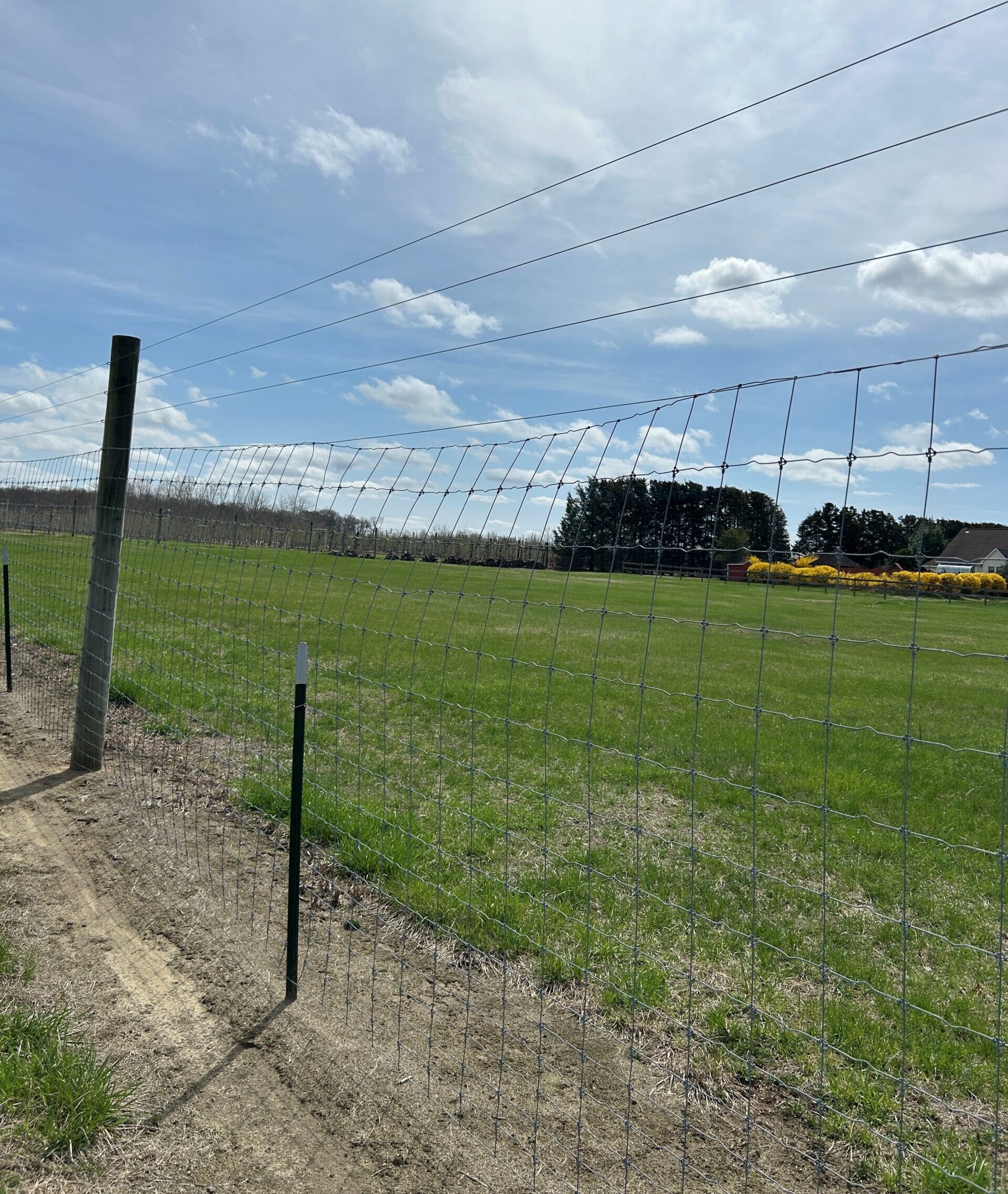
Figure 4. The deer jumped through the 8-foot catch wire. A 2-foot straight wire fence above 6 feet of woven-wire fencing was ineffective. Photo by H. Gohil
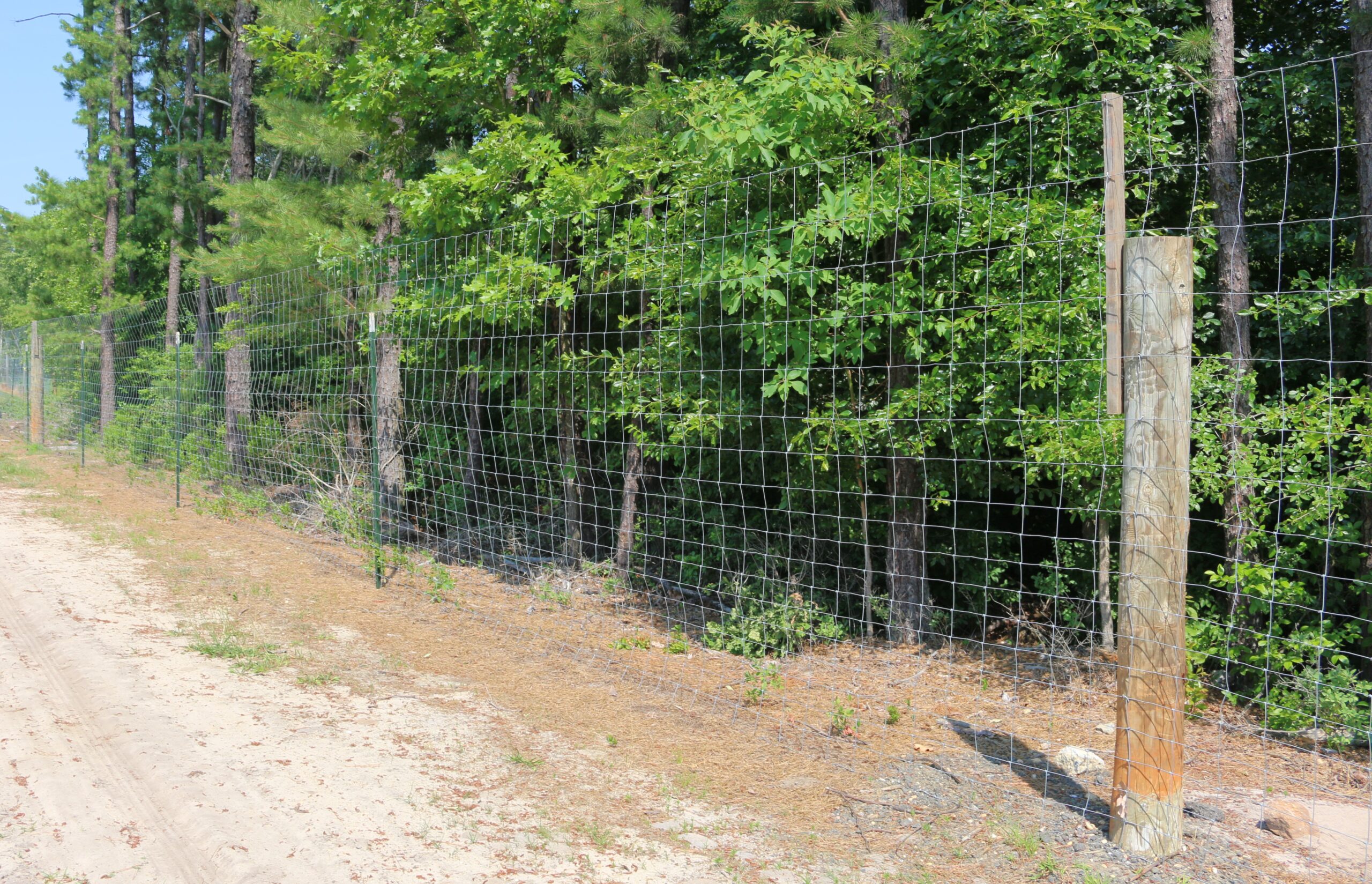
Figure 3. The permanent, eight-foot-high fence with metal posts between wooden posts (right) covers a larger area. Photo by H. Gohil.
An exclusion fence should be part of the basic vineyard development budget. One can delay it until after the first year by using tall grow tubes. The tubes work as an exclusion method until vines grow out of the tubes. Permission from the township is required for the fencing; sometimes, the township may also ask for written approval from the neighbors. The fencing is expensive. A recent job by a local outfit cost around $12,000 to fence a 2.5-acre vineyard in southern New Jersey. However, the fencing cost can be staggering for a much larger area. Here, the fence cost can be reduced by increasing the distance between wooden posts and installing metal posts between the wooden posts (Figure 3). The State Department of Agriculture sometimes offers cost-share funds for wildlife fencing materials. For more information, including the application form, a notice of availability and eligibility, and information about New Jersey growers, please visit https://www.nj.gov/agriculture/divisions/anr/agriassist/deerfencing.html.
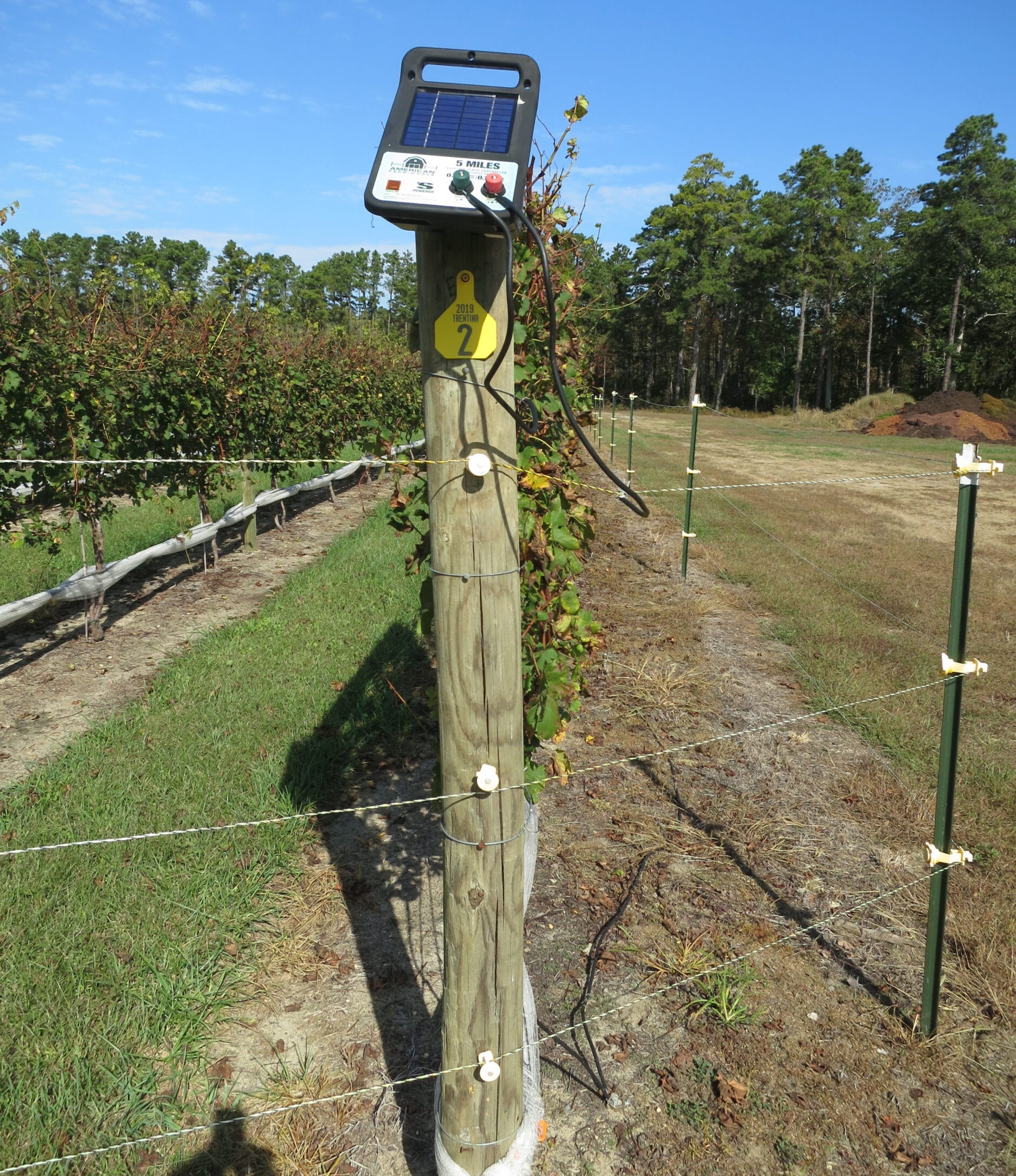
Figure 6. The temporary fencing surrounds the periphery of the planted vines. The solar panel mounted on the top generates a mild voltage current with a ground. Photo by H. Gohil
Temporary electrical fencing: If the area affected by the deer is small, temporary electrical fencing against the end posts and anchor wires will prevent the deer from stepping into the vineyard. Solar panels or a battery can power the wire. Solar-generated power can sometimes be weak and does not generally jolt enough to scare the deer. Rechargeable batteries can generate higher voltage, but the batteries must be recharged often. The wires can be removed or laid on the ground to allow tractor or labor movement. This low-power system generates low-current from a small solar panel mounted at the top of a fence post (Figure 6). This is an inexpensive system; however, temporary fencing may not be practical in the case of extensive vineyards. Deer can avoid these temporary-fenced blocks and enter an unfenced block, as they can change their feeding behavior.
Killing deer using firearms can be an effective and affordable way to control the deer causing damage in remote vineyards away from human habitation. Ensure you comply with the depredation regulations available on the Fish and Wildlife Service website. There are professional service providers with extensive experience in deer management.
Repellants are a short-term solution and work best in small-scale areas. Odor sprays that contain animal-based proteins are somewhat effective in deterring deer. Spray around the vineyard or mount on the trellis system before the deer begin feeding. Sound repellent is also effective; however, deer often become habituated to it after the initial scare and repeated exposure. Dogs can be trained to protect the vineyard. However, the challenge is to keep the dogs within the vineyard through an invisible perimeter programmed into their collar. Many systems use a buried wire that transmits a radio signal that defines the boundary. Complete covering of the fence with dark cloth to block the vineyard from view is typically ineffective, as completely blocking the view of the entire vineyard from a distance is generally not possible.
Reference:
Loegring JP and Witt ME. 2024. How to manage deer damage on trees and other plants. The University of Minnesota Extension. https://extension.umn.edu/planting-and-growing-guides/white-tailed-deer-damage
